Oxford University Press's Blog, page 93
October 27, 2021
“I wouldn’t start from here”: a SHAPE route to open access

Many people will be familiar with some version of the joke about a traveller asking a local for directions, only to be told that “I wouldn’t start from here.” The obvious humour lies in the seeming stupidity of the local in failing to recognise how useless their advice is to someone who is clearly “here.” But perhaps the longevity of that joke is that its gem of a punchline sparkles with truths about location and perception, as well as about individual knowledge and frustration.
From where to start is one of the drivers for the SHAPE (Social Sciences, Humanities, and the Arts for People and the Economy) initiative, which was launched earlier this year by a number of leading arts and humanities institutions in the UK, including the British Academy with support from OUP. SHAPE aims to do a better job of representing the value of its disciplines to society as a counterpoint to the recognisable identity afforded to STEM (Science, Technology, Engineering, and Mathematics). The initiative recognises that SHAPE researchers have different concerns and needs from their colleagues in STEM, and OUP will continue to explore how open research can be developed in a way which is sensitive to the social sciences and humanities and deliver genuine benefits in the way that research is conducted and shared. As a university press, as noted in the blog post by Rhodri Jackson earlier this week, we believe that a more open world should work for everyone and that the transition towards open research must be an inclusive process.
Opening up the monographIs there an argument that open access advocacy in SHAPE has been a little like the traveller and the local? And, if not starting from here, does open research perhaps offer a better way of getting there? There is plenty of evidence in the recent history of open access that researchers in SHAPE have often seen the open access movement as an outsider engaged in a pointless perambulation, insensitive to the landscape and ecology of local research, and keen to parade a scientific wardrobe that is ill-suited to the contours and climate of both.
For example, the research article as the write-up of an experiment seemed some way away from the long-form research process which resulted in a monograph, a complex and multivalent object serving a broader range of purposes. As Geoffrey Crossick argues:
“The monograph has a central place in the culture and ecology of research publication in the arts and humanities, and is important in most of the social sciences. These disciplines—containing as they do about half of the UK’s research-active academics—should therefore not be seen as some awkward outlier destined to converge over time on the science model of publication by journal article and refereed conference proceedings.”
Monographs and Open Access (UKSG Insights)
As noted with our colleagues at the University of Oxford, we strongly support the opening of long-form research, which is fundamental to SHAPE, provided we can continue to fulfil our mission and add value though high-quality monograph publishing.
SHAPE research has parallels with design thinking. It is synthetic and creative, and the monograph remains a highly flexible project envelope. Analogous to a cell membrane, it provides the means through which elements of research can be introduced, arranged, leveraged, adapted, or removed, according to the way that the particular research develops.
The gift of timeSuccessful change requires engagement and is best achieved through a combination of both delivering recognisable benefits and minimising the cost of making the change. Arguably, for today’s researcher the most valuable commodity is time. The developments we are seeing within the broader space of open research may provide a better solution to that equation for SHAPE researchers by aligning with initiatives which are already in train in the SHAPE disciplines and which do offer a cumulative benefit in time savings over the full life of a research project.
First, there is a coalescence of methods and tools within the Digital Humanities, which is both a movement at the higher order and a set of specific disciplinary specialisms—and both of which have implications, and opportunities, for the ongoing development of research skills and culture. One example is Humanities Commons. It’s a purpose built open-source platform which supports communication and collaboration for SHAPE researchers. Earlier this month it received a $971,000, five-year grant from the Andrew W. Mellon Foundation to support its ongoing development.
The challenge is also being taken up by the UK Software Sustainability Institute (SSI), which is currently investigating requirements around digital tools and methodologies in SHAPE on behalf of the Arts and Humanities Research Council. The SSI is looking at both existing digital practices but also the council’s ideas for how research practices could be better supported by technology in future. The SSI is also playing a leading role in developing definitions of discrete professional research roles and skill sets which exist, and need to be better recognised, within both SHAPE and STEM.
Framework for the futureA flexible approach to research, as is characteristic of SHAPE, can still involve recognised stages, workflows, and objects. A systems thinking approach, as evidenced by the SSI, will help reflect the changing research environment but also provide a platform for new standards and tools which are properly embedded in SHAPE research. Both Humanities Commons and the SSI represent avenues through which open research and open data can percolate through SHAPE.
Martin Eve, in his book Open Access and the Humanities, called for a “definitional framework for why the monograph should be thought of differently” in order to understand its role within an open-access world, and said that it was necessary “ to ask what the monograph is for; how it is produced; and why it should be seen as different from other forms.”
Open research may be the route to surfacing that definitional framework. By delivering the benefits of open research to researchers in SHAPE disciplines, research will become more visible at earlier stages in the research cycle, which will, in turn, provide a platform for earlier engagement by both researchers and policy and knowledge workers. In turn, the tools and techniques of open research will also deliver open access in a way that is understood and managed by the SHAPE community. They just won’t have started from here.

October 26, 2021
What is the impact of opening research? [podcast]

Open access is a publishing model that has been gathering momentum across the world for more than 15 years and each year, during the last week of October, the publishing and research sector comes together to celebrate it during International Open Access Week.
Over the past few years, the movement has grown to encompass other aspects of the research journey, from data sets to peer review, and open research has grown up as an umbrella term of experimentation with opening up in all of these areas. So what is the impact of opening research?
Open research means faster, more equitable access to cutting edge findings, driving disciplines forward, and introducing transparency into the research process. As the world’s largest university press publisher of open access content, Oxford University Press believes a more open world should work for everyone.
Today’s episode brings together three leading researchers and one of our very own publishers to offer their perspectives on the impact of opening research. We thank Dr Tara Spires-Jones, Editor in Chief of Brain Communications, Professor Ugo Panizza, Editor in Chief of Oxford Open Economics, Professor Marcus Munafo, Editor in Chief of Nicotine and Tobacco Research, and Adam Leary, Senior Publisher in OUP’s Open Access Publishing team, for taking the time to share their views.
Check out Episode 66 of The Oxford Comment and subscribe to The Oxford Comment podcast through your favourite podcast app to listen to the latest insights from our expert authors.
Oxford Academic (OUP) · What is Public Debt? – Episode 65 – The Oxford Comment Recommended readingFor more about open access publishing, check out the following:
“Open Access”, episode 58 of the Oxford Comment – Danny Altmann, the Editor in Chief of Oxford Open Immunology , and Rhiannon Meaden, Senior Publisher for Journals at OUP, discuss the open access movementInternational Open Access Week 2020: What can a university press do to drive open access?International Open Access Week 2020: Opening the bookThe future of research is more open: a blog post from OUP’s CEO, Nigel PortwoodReflecting on Open Access Week 2020And don’t forget to check out the blog posts published this week on this blog where we’ll be exploring the idea that a more open world should work for everyone.
Featured image: Photo by Patrick Tomasso on Unsplash.

October 25, 2021
What policy and industry changes are needed to avert climate catastrophe?
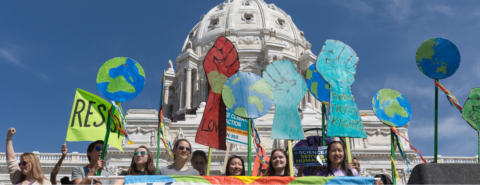
To avert catastrophic climate change will require huge changes in energy, transportation, land use, urban systems, infrastructure, and industry, involving government, business, educational and research institutions, civil society, and the general public. None of these restructurings will be easy. Each will encounter technical difficulties and strong political opposition. Taken together, they will require national strategies specific to each country, sustained over time, and adjusted with experience, combined with political strategies to address the institutional, legal, political, and bureaucratic obstacles to rapid, far-reaching change throughout the economy. These need to go together with communication strategies to achieve public understanding and buy-in. They will require popular tolerance for policy learning—trying out methods for encouraging needed change, monitoring results, learning from successes and failures, and putting the lessons of experience into practice. Not a small order.
This is the problem facing the upcoming international climate meeting in Glasgow, known formally as the Conference of the Parties of the UN Framework Convention on Climate Change. Putting a price on carbon, stimulating technological innovation, and funding scientific research are all only essential first steps if even the relatively modest target of 2°C agreed by the world’s governments in Paris in 2015 is to be met, let alone the aspirational target of 1.5°C especially urged by Pacific islands that are in danger of inundation. To put these targets in perspective, the wildfires, hurricanes, and floods of 2021 were exacerbated by the current level of only 1.2°C of global warming.
Let’s look at a few parts of the economy to see how this might work.
Electric energy from renewable sourcesWe first look at energy, which is responsible for some two thirds of annual global CO2 emissions. Here the major issue is that electric power must expand so that transportation, space heating, and some industries (steel making, for example) can be electrified in order to improve their energy efficiency. It is important that renewable sources feed this expansion. A sizable part of this is likely to come from decentralized sources like windmills, rooftop solar, and perhaps even electric cars in reverse charge mode.
Integrating a high proportion of wind and solar resources into electric power systems changes the classical utility model of base- and peak-load generators and centralized grid operations in fundamental ways. Wind and solar energy are intermittent and unpredictable. The wind does not blow all the time and its strength can fluctuate rapidly when it does. The sun does not shine at night; daytime clouds can obscure it from minute to minute and from place to place. A solar-equipped building may use the electricity its panels generate at one time and export it into the grid a little later.
“there will be fluctuations both in the supply of electricity and in demand… Managing them requires quick-response distribution grids to allow electricity to flow efficiently in any direction”
This means that there will be fluctuations both in the supply of electricity and in demand, which can last for milliseconds, seconds, hours, or (in the case of seasonal variations) months. These fluctuations are unlike those in the classical utility model, which were only in demand. Managing them requires quick-response distribution grids to allow electricity to flow efficiently in any direction, as well as flexible, high-capacity energy storage and an expanded “super-grid” of high-capacity transmission wires to transfer power from one place to another, together with a digitized payment system that can keep track of the transfers.
In this new system, digital technologies will play a vital role, providing faster response, improved asset management, smoother interfaces, and more efficient data collection and sharing. All this means major changes in energy markets, in the business models of electric energy companies and in the job descriptions of their engineers and managers, as well as a whole new set of generators and storers of electric energy. In the US, it means reform of the rigid, balkanized system of state-based regulation of the electric grid, changes that are also needed to improve its security and resilience.
Energy conservationTurning to efficiency in the use of energy, the energy intensity of economic growth—the amount of energy it takes to produce a given rise in GNP—has been decreasing in high-income countries over the past two decades, thanks to improved energy efficiency in industry via recovery and use of waste heat, use of renewable sources of process heat, the redesign of industrial products, and more recycling and more efficient use of materials.
There are equally important possibilities for energy conservation in agriculture, urban design, buildings, and transportation. Most of them will cost money upfront and attract political opposition. They will not take place without carbon charges sufficient to translate the “externality” of climate change into costs that influence the business decisions of companies and financial institutions and the planning and policy decisions of government authorities at national, regional and municipal levels. Many will require changes in infrastructure that could take half a century or more before they would normally need to be replaced, as well as changes in public attitudes and policies that also take a long time to take hold.
AgricultureAgriculture is a major worldwide source of greenhouse gases. In technologically advanced areas, industrial agriculture uses fossil fuels for plowing, planting, and harvesting, for manufacturing fertilizer, for pumping irrigation water, and for sustaining far-flung supply chains. Agricultural soils store a large quantity of organic material, much of which is oxidized to carbon dioxide when exposed to air by plowing. Mineral fertilizer degrades chemically into nitrous oxide (N2O), a greenhouse gas 300 times more potent than CO2, molecule for molecule. Clearing forest lands for cropping decreases reflected sunlight and returns carbon dioxide to the atmosphere as trees decompose. Rice paddies produce large amounts of methane, as do peat soils when they are drained to create farmland or palm oil plantations.
The list goes on. Livestock converts only a fraction of feed into meat. Cow burps and flatus are large sources of methane. Uneaten food also contributes to climate disruption: in low-income countries as losses in the field, after harvest, and in storage, and in wealthier countries as garbage generated in food preparation and in storage before and after meals. When incomes increase, people eat more meat, increasing their ecological footprint. Each of these issues involves complex economic, social and institutional forces.
Cities and buildings“Heating and cooling buildings produced some 30% of CO2 emissions worldwide in 2012.”
More than three quarters of the world’s population will be living in cities by the year 2050. (The present figure is about half). Since more than 70% of world carbon dioxide emissions and 65% of world energy demand originates from cities, this urban explosion has enormous consequences for climate change. Even so, there are opportunities for conservation. Cities can reduce sprawl, can preserve forests and agricultural land, and can make transportation less dependent on private automobiles. LED street lighting can save energy. Older cities and towns can revitalize their downtowns and industrial areas, and can encourage vertical growth––growing in and up. Relatively self-contained neighborhoods with residential, commercial and office buildings close together can encourage walking and cycling and minimize long-distance commuting. When unavoidable, urban spread can maximize the number of people that live along “ride-dense” mass transportation corridors. All of these issues reflect complex issues of city planning.
Heating and cooling buildings produced some 30% of CO2 emissions worldwide in 2012. This number can be reduced if new housing stock is built to passive, “zero-carbon” standards, including use of renewable energy for heating and cooling, more efficient construction techniques, longer-lived and recyclable materials, salvageable and less carbon dioxide-intensive building components, on-site renewable energy and co-generation, LED and natural day lighting, energy-efficient appliances, improved insulation and overall energy efficiency, smart meters, and automated control systems.
In warmer countries, building design and retrofits can avoid the use of air conditioning, an important source of CFCs and HCFCs, which destroy stratospheric ozone and are potent greenhouse gases. They can revive traditional architecture that makes occupants comfortable in hot weather by controlling natural airflow. Revised appliance standards and building codes can eliminate the “split incentives” facing builders and landlords who cannot pass on the initial costs of improved energy efficiency to prospective buyers and tenants. Again, a big policy agenda.
TransportationTransportation accounts for about a quarter of final energy consumption worldwide. Vehicle manufacturers are already increasing the energy efficiency of engines, adapting gasoline and diesel engines to biofuels, and are developing improved batteries and fuel cells for hybrid and electric cars. Here, major mitigation objectives are to convert short-distance trips from airplanes to railroads, to expand public transportation, to reduce fuel-consuming traffic congestion, to encourage walking, cycling, and ride sharing, and to replace as many gasoline-fueled automobiles as possible with cars powered by electricity. (Electric motors are more energy efficient and less CO2-emitting than internal combustion engines, especially if run on electricity from renewable sources.) Ships can save energy by moving at slightly slower speeds. All of these require changes in policy.
Each of these opportunities for electrification and energy conservation, then, requires policies and incentives to overcome specific obstacles to their adoption, in addition to technological innovations guided by policies that turn carbon dioxide emission into a business cost. We should not shy away from discussing the full scope of the economic, political and institutional implications of the many measures needed to mitigate climate change.
Feature image by Lorie Shaull on Flickr (CC BY 2.0)

How is OUP contributing to the open research landscape today?

International Open Access Week, which runs from 25-31 October this year, always provides a good opportunity to reflect on the progress we have made towards open research over the last 12 months. As a mission-driven university press, we strongly support the opening up of research and the benefits for access and inclusion that OA brings. We believe that a more open world should work for everyone. We want to ensure that the transition towards open research is itself an inclusive process—to use the title of OA week, “it matters how we open knowledge.”
Accelerating our open research publishingDuring the past year, we have seen significant steps towards open research, both generally, and at OUP specifically. The positive impact of opening research in response to the COVID-19 pandemic has fuelled a push for an even faster transition to open, and funders, publishers, and academic institutions have all accelerated their open research programmes. At OUP, we have greatly expanded our open access publishing in our journals: we now publish more than 90 fully open access journals and more than 20,000 new open access articles a year (the latter an increase of more than 35% on last year). OUP’s journals are themselves a collaborative effort. Of the approximately 450 journals we publish, more than 75% are published on behalf of scholarly societies. The societies we work with vary dramatically in membership, in geography, and in subject. This wide range of organisations naturally leads to a wide range of viewpoints, hopes, and concerns, and drives our eagerness to make sure the transition to open works for all.
Inclusivity in transformative agreementsOne of the key drivers opening research is the growth of transformative agreements. Transformative agreements give universities access-to-read journals and allow their authors to publish open access in the same journals. There are now 282 live agreements on the ESAC Registry, covering almost 50 publishers and 40 countries, and (according to ESAC data) making more than 145,000 articles open access each year.
Transformative agreements are a good example of the opportunities and challenges of opening up research. We can see great equity within transformative agreements—for example, looking at our own agreement with Jisc in the UK, we see that the subject split of the articles made open access through that agreement virtually identically correlates with the overall subject spread of our UK publishing. That’s significant, because we have long known that access to funding to cover open access publishing charges has been harder to come by for scholars in SHAPE (Social Sciences, Humanities, and the Arts for People and the Economy) disciplines. The centralised funding arrangement of the OUP and Jisc agreement has helped correct that imbalance.
However, as recognised in UK Research and Innovation’s (UKRI) new open access policy, announced this summer, transformative agreements run the risk of being exclusionary. Transformative agreements are complex and resource-heavy to negotiate, meaning that academic consortia and publishers naturally will tend to focus on negotiating agreements with the biggest publishers or the biggest consortia. It is important that transformative agreements don’t leave behind smaller publishers and smaller institutions. At OUP, our transformative agreement strategy is focussed around flexibility, transparency, and inclusivity. We want to offer the opportunities of transformative agreements to customers around the world, of all shapes and sizes. Flexibility in particularly is key here—avoiding one-size-fits-all models that might work for one customer but not for others.
Supporting OA monographsLooking beyond journals, this year we published our 150th OA book. The UKRI’s policy was also notable in this area, mandating OA publication of monographs from 2024 on. As we have noted elsewhere with our colleagues at the University of Oxford, we strongly support the opening of long-form research, just as we do research articles, but we do want to ensure that there is adequate funding and flexibility to support high quality monograph publishing. Later in OA week, my colleague Andy Redman, our Director of OA books publishing, will expand on this topic and the open research world in SHAPE disciplines.
Transparency in the research processAnother accelerating trend is the focus on ensuring we don’t just open up access to research outputs but look at the entire research process. There is great work going on across publishing and research to introduce greater transparency into the research process, to help to reduce unnecessary duplication, and to improve reproducibility, all with the idea of ultimately speeding up research. This doesn’t just mean employing “open” practices on existing journals and books; we should also experiment with publishing non-traditional research outputs, such as protocols, research methodologies, and data. There is still a lot of work to do in this area, but the advantages are clear: opening up research practices will allow research to build open research much more easily.
The open research landscape moves quickly. Even when you are immersed in it every day it can be hard to keep up! As the world’s biggest university press publisher of open research, we will continue moving towards open, while retaining our commitment to quality, and with a focus on making sure open works for everyone.

October 24, 2021
10 books on magic, monsters, and myths to read for Halloween [reading list]

From its origins as an ancient Celtic festival celebrating the end of the harvest, over time Halloween has evolved into a day of trick-or-treating, scary films, costumes, and carving pumpkins.
From witches to werewolves, explore a range of titles selected by the OUP Arts & Humanities team for you to read in the lead up to Halloween.
The Dragon in the West: From Ancient Myth to Modern Legend by Daniel OgdenHow did the dragon get its wings? Everyone in the modern West has a clear idea of what a dragon looks like and of the sorts of stories it inhabits, not least devotees of the fantasies of J. R. R. Tolkien, J. K. Rowling, and George R. R. Martin. A cross between a snake and some fearsome mammal, often sporting colossal wings, they live in caves, lie on treasure, maraud, and breathe fire. They are extraordinarily powerful, but even so, ultimately defeated in their battles with humans. What is the origin of this creature? A creature popular in contemporary fiction and cinema, Ogden reveals how the dragon was known to the ancient Greek and Roman worlds, and came down to us through early Christianity, Anglo-Saxon, and Norse legends.
Read The Dragon in the West: From Ancient Myth to Modern Legend
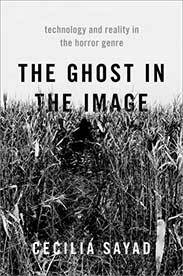 The Ghost in the Image: Technology and Reality in the Horror Genre by Cecilia Sayad
The Ghost in the Image: Technology and Reality in the Horror Genre by Cecilia SayadOur century has seen the proliferation of reality shows devoted to ghost hunts, documentaries on hauntings, and horror films presented as found footage. The horror genre is no longer exclusive to fiction and its narratives actively engage us in web forums, experiential viewing, videogames, and creepypasta. The Ghost in the Image offers a new take on the place that supernatural phenomena occupy in everyday life, arguing that the relationship between the horror genre and reality is more intimate than we like to think.
Read The Ghost in the Image: Technology and Reality in the Horror Genre
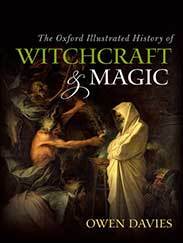 The Oxford Illustrated History of Witchcraft and Magic edited by Owen Davies
The Oxford Illustrated History of Witchcraft and Magic edited by Owen DaviesThis richly illustrated history provides a fresh approach to the complex story of witchcraft and magic. From spells written on clay tablets to the boy who lived, magical beliefs and practices have been woven throughout our history and culture for over 4,000 years. The Oxford Illustrated History of Witchcraft and Magic explores the anthropology of magic around the globe, investigates what the archives really tell us about the sixteenth- and seventeenth-century witch trials, and looks at witches in film from The Wizard of Oz to Buffy the Vampire Slayer.
Read The Oxford Illustrated History of Witchcraft and Magic
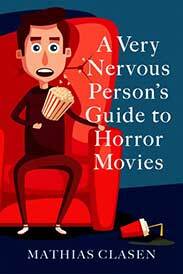 A Very Nervous Person’s Guide to Horror Movies by Mathias Clasen
A Very Nervous Person’s Guide to Horror Movies by Mathias ClasenHorror expert Mathias Clasen delves into the psychological science of horror cinema to bust some of the worst myths and correct the biggest misunderstandings surrounding the genre. In short and highly readable chapters peppered with vivid anecdotes and examples, he addresses the nervous person’s most pressing questions.
Read A Very Nervous Person’s Guide to Horror Movies
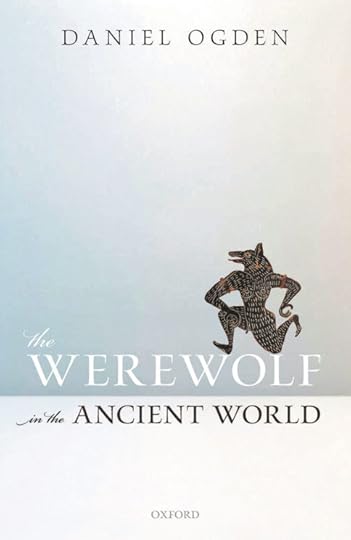 The Werewolf in the Ancient World by Daniel Ogden
The Werewolf in the Ancient World by Daniel OgdenTales of the werewolf are well established as a sub-strand of the popular horror genre; less widely known is how far back in time their provenance lies. This is the first book in any language devoted to the werewolf tales that survive from antiquity, exploring their place alongside witches, ghosts, demons, and soul-flyers in a shared story-world.
Read The Werewolf in the Ancient World
Horror: A Very Short Introduction by Darryl Jones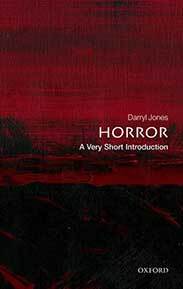
Four o’clock in the morning, and the lights are on and still there’s no way we’re going to sleep, not after the film we just saw. The book we just read. Fear is one of the most primal human emotions, and one of the hardest to reason with and dispel. So why do we scare ourselves? It seems almost mad that we would frighten ourselves for fun, and yet there are thousands of books, films, games, and other forms of entertainment designed to do exactly that. Exploring the key tropes of the genre, including its monsters, its psychological chills, and its love affair with the macabre, Horror: A Very Short Introduction discusses why horror stories disturb us, and how society responds to literary and film representations of the gruesome and taboo.
Read Horror: A Very Short Introduction
 A Supernatural War: Magic, Divination, and Faith during the First World War by Owen Davies
A Supernatural War: Magic, Divination, and Faith during the First World War by Owen DaviesA Supernatural War reveals the surprising stories of extraordinary people in a world caught up with the promise of occult powers. Uncovering and examining beliefs, practices, and contemporary opinions regarding the role of the supernatural in the war years, Owen Davies explores the broader issues regarding early twentieth-century society in the West, the psychology of the supernatural during wartime, and the extent to which the war cast a spotlight on the widespread continuation of popular belief in magic.
Read A Supernatural War: Magic, Divination, and Faith during the First World War
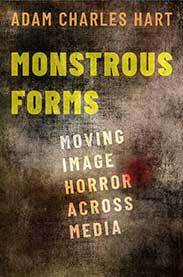 Monstrous Forms: Moving Image Horror Across Media by Adam Charles Hart
Monstrous Forms: Moving Image Horror Across Media by Adam Charles HartIt makes us jump. It makes us scream. It haunts our nightmares. So why do we watch horror? Why do we play it? What could possibly be appealing about a genre that tries to terrify us? Why would we subject ourselves to shriek-inducing shocks, or spend dozens of hours watching a television show about grotesque flesh-eating monsters? Monstrous Forms offers a theory of horror that works through the genre across a broad range of contemporary moving-image media: film, television, video games, YouTube, gifs, streaming, and virtual reality.
Read Monstrous Forms: Moving Image Horror Across Media
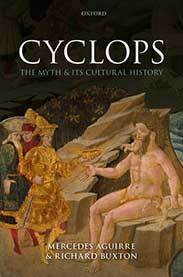 Cyclops: The Myth and its Cultural History by Mercedes Aguirre and Richard Buxton
Cyclops: The Myth and its Cultural History by Mercedes Aguirre and Richard BuxtonA Cyclops is popularly assumed to be nothing more than a flesh-eating, one-eyed monster. In an accessible, stylish, and academically authoritative investigation, this book seeks to demonstrate that there is far more to it than that—quite apart from the fact that in myths the Cyclopes are not always one-eyed! This book provides a detailed, innovative, and richly illustrated study of the myths relating to the Cyclopes from classical antiquity until the present day.
Read Cyclops: The Myth and its Cultural History
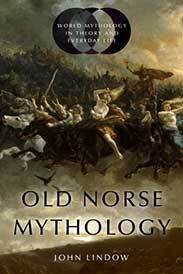 Old Norse Mythology by John Lindow
Old Norse Mythology by John LindowOld Norse Mythology provides a unique survey of the mythology of Scandinavia: the gods Þórr (Thor) with his hammer, the wily and duplicitous Óðinn (Odin), the sly Loki, and other fascinating figures. They create the world, battle their enemies, and die at the end of the world, which arises anew with a new generation of gods. These stories were the mythology of the Vikings, but they were not written down until long after the conversion to Christianity, mostly in Iceland.
Feature image by Ganapathy Kumar from Unsplash

October 20, 2021
Spooky Halloween: the origin of “spook”

I am not sure whether this year hordes of masked children will be roaming my neighborhood on 31 October, but in anticipation of this great event, I listened to the suggestion of my editor to write something connected with the great day and am doing so two weeks ahead of time.
SPOOK “ghost”The word spook surfaced in the nineteenth century in American English and is believed to be of Dutch origin. Its alleged source is Dutch spook, pronounced with the vowel of English awe. German has Spuk, also taken from a northern (Low German) dialect. Similar words in the Scandinavian languages must have had the same source. If the accepted derivation of spook is correct, the English word must be of bookish, rather than colloquial, origin, because spook, borrowed from oral speech, would have become spoke or something like it. Also, Dutch words in English are usually much older. There is a Swiss verb zerspäuken “to be haunted by ghosts.” The vowels do not match, but in such “emotional” words, sounds often vary in a haphazard manner. Modern dictionaries unanimously call the so-called ultimate origin of this group undiscovered.
The problem is that we know too much about this ghostly company rather than too little. All over the place, we can see similar words without initial s-, for example, Old English pūca “little boy,” which makes us think of Puck (see the post for 20 February 2008). Opinions differ about the connection between Puck and spook. Obviously, in such words we cannot hide behind the ever-helpful s-mobile, an enigmatic prefix that occurred in old words of Indo-European origin, even though some good language historians resorted to it in dealing with more modern words. For example, it has once been suggested that slang is lang-, with s- added as a prefix (most probably a hopeless etymology, regardless of s-mobile). As will become clear later, Puck and spook may be connected, even if vaguely.
 Who’s afraid of the big bad spook?
Who’s afraid of the big bad spook?How can a ghost (any ghost) get its name, and why is the etymology of bogymen, gremlins, goblins, and spooks usually unknown? Could some of them be taboo words? (Do not call a spook by its real name, then it won’t hear it, and you needn’t be afraid of its visit.) Hostile giants of Scandinavian myths had four names. At least two of them have not been explained. Rísi is especially irritating, because its cognate, the German word Riese, is still very much alive; yet no one can explain where it came from. Spook has been once dismissed as a substrate word, a loan from some ancient indigenous language. This dead-end etymology looks clever but is just a coy way of saying: “Origin unknown.”
What do spooks of all types do? Apparently, they frighten people, have a terrible appearance, make a lot of noise, and portend disaster when seen. A few names were probably invented by adults to frighten little children. The Greek source of giant was gigant-, as seen in English gigantic. Who was giga, a distant cousin of English boogey and Russian buka? Did they shout gigi, giga, boo, boog, and the like? “Go to sleep, you naughty child, or giga ~ buka will come and fetch you.” Does a fetch come and fetch its victims? Another puzzling thing is that quite a few such words are known in many unrelated languages, Germanic and Finnish, for instance.
Let us look at some English words beginning with sp-. The verb spit is probably expressive, in some way imitating the sound one makes when “ejecting saliva.” Spew is common Germanic (fourth-century Gothic had it too). Latin spuere sounds like Old English spīwan, and so does Greek ptūein (allegedly, from spūtein). Even speak may be of similar origin! This verb seems to have had r in the root. Its German cognate sprechen resembles Old Icelandic spraka “to crackle.” English spark, if anyone is interested, is a word “of unknown origin.” Speak ~ sprechen seem to have arisen as expressions for a powerful statement. English spurn and Latin spernere “to scorn” may belong here too. All those words have been grouped as belonging together more than a hundred years ago.
 Puck in A Midsummer Night’s Dream
Puck in A Midsummer Night’s DreamPhoto by Smatprt
What could be the ancient function of sp-? Did the language game begin with spittle and its alleged magic qualities? Spewing, spitting, spilling, spattering… Let us not forget spit(ting) ~ spit (and) image of one’s father (spittle was associated with sperm). Speed meant “good fortune, success” (compare may God speed you; good speed), and its cognates, like Latin spēs “hope,” are close. Spat “oyster” and spat “quarrel” are words “of unknown origin.” The same holds for spate (its original meaning is “flood”). Spook is, rather obviously, an invented word for a goblin. Sp– attaches itself easily to expressive words. Therefore, it does not come as a surprise that spoof was coined “for fun.” With all the diffidence required in such situations, I would like to suggest that spook is a noun, whose form was meant to frighten, and the frightening part was sp-. Such conjectures are impossible to prove, and it is much easier to hide behind the formula “of unknown or substrate origin” (incidentally, in the substrate language, the sp-association may have been the same as in Indo-European). Given my approach, the origin will remain “unknown,” because a guess is a guess, but this guess at least provides a context: speak, spill, spit, spew, spark, spat, and the rest.
Now back to the mischievous Puck. In the environment of this word, we find pat ~ patter, peep (two meanings), peg (the latter again of obscure Low German or Dutch origin), pet, pit, pick, pat, and so forth. Some such words, for example, pip (a spot on a paying card) are expressive, like most words beginning with and ending in the same consonant, and some are sound-imitating (onomatopoeic). But so are also puff, pap, plump, pit-a-pat, and pop. The verb put emerged with the sense “push, thrust.” Push, pull, poke (the alleged source of puck in hockey), and pule are not far behind.
 Pop goes the onomatopoeic weasel.
Pop goes the onomatopoeic weasel.I have cited only such words as are well- or fairly well-known. As noted, demons, ghosts, and their kin are supposed to frighten people by puffing up and making a lot of noise. Puck is a tolerably good sound-imitating complex. For example, Russian puk– means “fart.” Both senses—“puff up” and “make a lot of noise”—often merge. I see no reason why Puck, as well as his Scandinavian and Celtic look-alikes, could not mean “a noisy creature ready to burst,” like Rumpelstilzchen (or Rumpelstiltskin), who concealed his name! Whether Puck emerged as a direct continuation of Old English pūca is a fact of no importance. Such formations arise, disappear, and are coined again in many parts of the world. Severe statements to the effect that spook and Puck have nothing to do with each other should probably be tempered, even if slightly.
It is curious to observe that the hotbed of many words mentioned above is Middle Dutch or Low German. Note that the spelling of the word ghost (with its unexpected gh-) seems also to be of Flemish origin. Thus, both spook and ghost came to English (at least partly) from the same region. A classic case of double Dutch.

Mapping the great battles [interactive map]
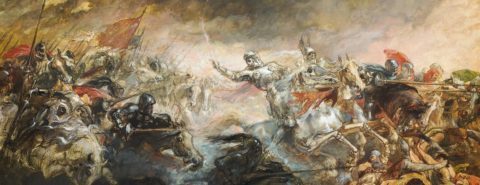
Certain battles acquire iconic status in history. The victors have been celebrated as heroes for centuries, the vanquished serve as a cautionary tale for all, and nations use these triumphs to establish their founding myths. These battles are commemorated in paintings, verse, and music, marked by monumental memorials, and used as the way points for the periodisation of history. Many of these battles have also experienced a significant cultural afterlife that has extended and expanded the meaning of the conflict across time and space. Thermopylae, Waterloo, Gallipoli—their names exist as recognizable shorthand for all. These are just a few of the great battles that have cast long shadows throughout history.
In this interactive map, you can explore the legacy of 10 key battles dating back to 480 BC through World War II. Learn more about the battles themselves and the lives of those who fought while also exploring each battle’s legacy in the collective imagination of the winners, the defeated, and all of history.
Featured image by by Birmingham Museums Trust on Unsplash

October 19, 2021
Five key areas of communication for research integrity

Viewed from the outside, the research idyll can appear inspirational—a research team working in perfect harmony each contributing parts to the whole to achieve exciting advances in knowledge contributing to the public good. PhD candidates or new post-doctoral fellows will be excited to be accepted to join an established team, looking forward to commencing or establishing their research careers, and anticipating a stimulating and challenging mentoring environment.
Such a positive and constructive environment will exist in many research groups where each member of the team, whether group leader or research assistant, has clarity around their role and their responsibilities.
Sometimes research teams can fall short of this reasonable expectation and the tensions that may arise can damage or even destroy the productivity of individuals or the whole research collaboration. Why do these breakdowns occur? Often, at the core, it is due to a failure by all the team members to communicate clearly, honestly and respectfully about the goals of the team and each individual, as well as expectations and understanding of responsible research conduct.
Here are five research responsibilities about which individuals and teams should maintain open channels of communication to avoid common causes of dispute or even research misconduct.
1. PlanningNever underestimate the importance of a well-structured research plan. Each member of a team should know and understand the component for which they have responsibility. This applies whether you are the research leader with overall responsibility for the team and the larger project and funding, a post-doctoral fellow, a PhD candidate, or a research assistant. Knowing where your research questions and responsibilities begin and end avoids unnecessary conflict and misunderstanding, allowing effective focus and collaboration and good results. Remember, effective planning includes considering compliance requirements, such as the need for human or animal ethics approvals and ensuring everyone who should be is named on and understands the approved protocols.
2. Data managementDoes your team have a good data management plan? Do you? Everyone should know where the project data is to be stored, should be following an agreed data management plan, and should understand their responsibility to upload and curate their data in accordance with that data management plan. Everyone in the team should understand the degree of confidentiality expected to be maintained around the data and must respect that and not share the data or any results unless appropriate to do so and only with appropriate agreements in place. The team should regularly discuss any challenges or difficulties that arise relating to the data collected. When a team member leaves a project to take up a new role in a new institution, for example, it is essential they seek permission from their current institution and team before taking any data with them, should only do so if permission is granted, and should only use the data in a way allowed by the data transfer agreement.
3. Declare and manage conflicts of interest (COI)It is very normal for COI to arise in the context of research. Having a COI is not wrong but failing to declare and manage a COI is and can be the cause of serious breaches of responsible research conduct and can cause considerable resentment between individuals or within teams. Research teams should develop an honest and open culture enabling and supporting possible COI to be raised and should support institutional processes to declare and manage those COI. Team members must be supported to be truthful in declaring any conflicts of interest and then in managing these in relation to their role in the research and in accordance with their institutional processes. Normalising honest communication and discussion removes the perception, potential, or actual risk that someone may benefit inappropriately from a COI.
4. AuthorshipOne of the most common and sadly damaging disputes which can arise within a research team can be over authorship. Who should be an author on a paper? Who should be acknowledged? What happens when a team member moves on to a new institution? Do they lose their right to be an author on work they have contributed to? What about when a new member joins a team? Discussing the development of research papers openly and regularly, recording what was agreed, and updating the agreement when an aspect changes significantly increases the likelihood of harmonious, timely, and appropriate authorship practices within a group and reduces the likelihood of destructive disputes.
5. Raise questions and concerns respectfullyEvery member of a research team has a responsibility to actively support and practice the good conduct of research and to ensure open and respectful communication can occur within their team. It is so much better to make sure team members are informed of changes, are welcome to raise any concerns or clarify uncertainties as soon as possible and in a way that is appropriate and considerate. Open communication reduces misunderstanding, engenders trust and respect, and creates a confident and harmonious team.
Clear communication about team goals, processes to support those goals, and ensuring all members of a team understand how their role and project fit within the wider research team helps significantly to create an effective and positive research environment, preventing the misunderstanding that can cause disharmony, or even worse, within a team. Communication should be led from the top. However, everyone who is part of a research team has individual responsibility to make sure they understand their own role and how they should contribute to a harmonious, supportive, and productive research group. Ensuring you or your team members are educated about these, and other, key areas of research responsibility will build a team culture that is open, supportive, functional, and actively demonstrates research integrity in day-to-day conduct.
Research Integrity 2.0 identifies the principles and responsibilities required of every researcher throughout the research process, from planning through to publication, providing practical guidance on dealing with complex issues.
The programme will provide evidence of comprehensive training in the responsible conduct of research at your institution and build confidence that all researchers are working to the highest levels of integrity standards.
Find out more about Research Integrity 2.0.

October 17, 2021
Can you have more than one cultural identity?
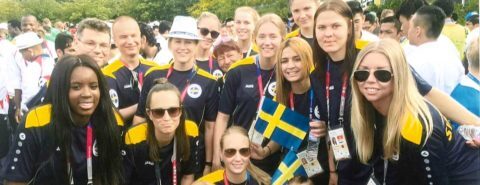
Forming our identity is an important developmental process that begins at birth. We acquire our identity through our interactions with individuals and groups in the social worlds to which we belong, including our caregivers, peers, friends, teachers, ethnic heritages, formal and informal groups, and social media. One critical component of our identity is our cultural identity, and one important aspect of our cultural identity is a sense of belonging.
What is our cultural identity?According to Oxford Reference our cultural identity broadly connects to how we categorize ourselves across factors that include ethnicity, nationality, age, religion, and gender. Our cultural identity helps us identify and validate our membership in a group with which we share symbolic meanings, customs, practices, language, and norms of behavior. We form our cultural identities from the sense of belonging we experience through our social interactions and relationships with those who share our language, ancestry, cultural values, beliefs, and practices. We don’t acquire our identity in a vacuum—rather it is an active process in which we construct our identity through our interactions in the cultural contexts in which we exist. It seems reasonable to suggest that our cultural identities are fluid and not fixed.
Why is achieving a cultural identity important?Our cultural identity gives us a sense of belonging. This emotional need motivates us to establish relationships and gain acceptance with individuals with whom we share cultural worldviews, values, and practices. In their work, Helen Neville and colleagues found that for indigenous Australians, a sense of belonging is a multidimensional experience that connects to passing cultural knowledge across generations, a shared language and cultural practices, peoplehood, place, acceptance, and pride. Learning about your culture and being proud of your cultural heritage is empowering; it connects to positive outcomes such as psychological well-being and academic success.
Achieving a well-defined and stable cultural identity and sense of belongingness is important, as group membership provides us with a sense of security, acceptance, support, inclusion, and pride. This process may be stressful for many individuals living in multicultural social worlds. For example, many immigrants may need to navigate their cultural heritage and identity formation while adjusting to their receiving country and new home. As Quan and colleagues note, for many immigrants, particularly young children and teens, the process of acquiring a cultural identity may occur alongside acquiring a new national identity. This leads to the question, “can you have more than one cultural identity?”
Can you have more than one cultural identity?Globalization, modernization, migration, and inter-ethnic/faith marriages are increasing cultural diversity and intergroup contact worldwide. Because of this expanded cultural contact, many individuals may have ancestries that include more than one cultural heritage. Indigenous, first generation, second generation, and mixed heritage or faith individuals, and “third culture kids (TCK)”—children raised outside of their caregiver’s place of birth—are likely to have multiple cultural identities. These individuals will learn to navigate the cultural values, worldviews, and practices of their cultural memberships across different contexts. For example, a Filipino American may activate their Filipino cultural identity when celebrating the Feast Day of Santo Niño and participating in the Sinolog Festival whereas the same individual may activate their American cultural identity when having a picnic to celebrate Independence Day on the Fourth of July.
The circumstances of peoples’ lived experiences may encourage or require multiple cultural identities. Voluntarily or involuntarily migrating to a new home is one of these experiences. When people migrate in search of a new home, many people encounter a disconnect between their cultural heritage and practices, language, and religious beliefs and those of their new home. This is particularly true in contexts where immigrants experience hostility, discrimination, and prejudice. For children and teens forming their cultural identity, this disconnect can be particularly problematic and produce stress and tension.
For example, many indigenous and immigrant children are bicultural and must transition between different cultural settings—their home culture and mainstream culture at school. These children often experience cultural dissonance—a disconnect between conflicting cultural identities when cultural expectations at school are incompatible with those at home. Programs such as KEEP (Kamehameha Early Education Program) and The Bridging Cultures Project are successful educational interventions that acknowledge and are respectful of children’s cultural heritages and strive to help all children achieve academic success. Many of these children develop multiple cultural identities.
In the United States, migration and increasing population diversity has led to concerns over preserving an American national identity. The fear of losing what defines one as an American for contemporary immigrants leads to pressures to assimilate to mainstream American culture and gives rise to hostility and tensions toward immigrants particularly those of the Latinx community as this community represents the greatest percentage of twenty-first-century immigrants residing in the US.
In their work, Christophe and colleagues explored cultural identity formation among Latinx communities in the US. For Latinx children and youths, acquiring a cultural and national identity can be an arduous process. As a group, most Latinx communities support cultural values and practices that promote familial obligations, respect for elders, community assistance, and collaborative problem solving. This emphasis upon the family and the interdependent nature of relationships often conflicts with mainstream American values that emphasize individual freedoms and the self as unique and separate from others. How immigrants adjust to their new home and the ethnic socialization messages caregivers provide for their children connects positively to children’s cultural identity formation.
Many caregivers must balance their desire for maintaining their cultural heritage with helping their children acquire new skills and abilities to become successful and find their place in their new home. For example, when caregivers integrate with mainstream society and preserve their cultural heritage, their children benefit from their multicultural experiences by developing multiple cultural identities. This has positive outcomes for children and teens navigating their cultural identity formation. Yampolsky and colleagues suggest that having multiple identities helps children adapt to the demands of and navigate the different cultural worlds in which they live, along with acquiring the skills and abilities necessary for success in those contexts. As bicultural individuals with multiple cultural identities, these children and teenagers will be better prepared to dispel notions of what it means to be an American through a mainstream American lens.
Immigrants in Canada also develop multiple cultural identities. Quan and her colleagues investigated cultural identity development among Chinese-born youths now living in Canada. These authors highlight how Asian individuals living in Canada, and broadly North America, navigate their Chinese identity and their Canadian identity as well as their gender identity. They found that engaging in cultural behaviors positively connected to identity formation. They offer recommendations for both caregivers who desire to preserve their cultural heritage and receiving countries that include providing opportunities for children and teens to participate in ethnic behaviors to help children and teens develop both a cultural and national identity.
Our cultural identity is a complex tapestry of our social experiences. Whether you have one or multiple cultural identities, forming a stable, coherent cultural identity has many positive benefits and developmental outcomes. These include how well people adjust to a new cultural setting, protection from mental health issues, general well-being, academic success, civic engagement, and a commitment to social justice. Wherever different cultural groups come into contact and coexist, it is likely that individuals living in these settings may possess multiple cultural identities. For indigenous, immigrant, first and second generation, refugee, and multiple heritage individuals, and third culture children, possessing multiple cultural identities is beneficial in helping them navigate the numerous cultural settings in which they interact. By providing opportunities for individuals to engage in cultural behaviors and intergroup collaborative activities, individuals, schools, institutions, governments, and countries can work together to make all citizens experience a sense of belonging, acceptance, and pride in who they are.
Featured image: the Swedish national women’s basketball team by Helena Kurt.

October 16, 2021
Six common types of plagiarism in academic research

In recent years the importance of integrity in research has been under a spotlight, with increasing numbers of research institutions placing emphasis on their researchers undertaking training on the matter. However, the issue of plagiarism in academic research has not disappeared, and some recent stats and events clearly highlight this.
In the world of computer science, a series of so-called “tortured phrases” helped a team of researchers uncover a new type of fabricated research paper. Across India, there has been increased focus on the issue of hijacked journals, with fraudsters fooling many early career researchers. It was recently reported that across Australia more than 1 in 10 university students submit assignments written by someone else, with new research suggesting that 95% of students who cheat this way are not caught. On this note, Copyleaks undertook a study earlier this year to examine the impacts of COVID-19 on global academic integrity. Their findings include some concerning statistics, including that globally, the similarity score for academic submissions rose from an average of 35.1% to an average of 49.6% across the two measured time periods. This includes a 31% rise in paraphrased content and a 39% rise in identically matched content. These figures also show that plagiarism is not happening in just one part of the research world, but is affecting experienced and early career researchers, as well as students themselves.
Despite all of this, there are plenty of ways that the research community can encourage and support a culture of positive research integrity at all levels. By knowing some of the common signs of plagiarism and other unethical practices, institutions can help reduce the number of plagiarised or fabricated research papers.
So, what are some of the most common types of plagiarism?
1. ParaphrasingThis is the most common type of plagiarism and is the act of the researcher or student rephrasing a text in their own words, without citing their sources. Paraphrasing with properly cited sources is not plagiarism. But when someone reads and uses different sources, pulls out key points and ideas, and rewrites these as if they were their own, this is paraphrasing plagiarism.
2. Patchwork or mosaicPatchwork plagiarism is similar to paraphrasing—it is when the researcher or student copy and pastes together pieces of different text to create a new text. This includes rewording pieces of sourced material while keeping the structure of the original texts.
3. VerbatimVerbatim plagiarism is when someone directly copies text from a source and pastes it into their own research without properly citing the information. Even if they delete a couple of odd words, if the majority of the text is the same, it is still verbatim plagiarism. This can be avoided by quoting the original source with quotation marks and using an in-text citation.
4. Source-based plagiarismThis type of plagiarism can happen in several ways. Incorrect citing is key here; citing your sources is usually the first step in avoiding plagiarism. A citation is not enough by itself; the researcher or student needs to ensure that all sources are correctly cited. Most areas of research or departments will have their own citation style, so make sure everyone is following the guidelines of the departmental citation style. Making up a source or including inaccurate information about a source are also both forms of plagiarism. If this is done, it could mislead readers of the paper by pretending that a reputable source supports the idea.
5. Global plagiarismThis is when the researcher uses someone else’s work while passing it off as their own—this can include having a friend or family member write their work for them, or paying for someone else to write their work for them
6. Self-plagiarismThis one is tricky and is frequently unintentional. The most serious type of self-plagiarism is turning in a paper that has already been submitted elsewhere—in this case it is no longer new or original work. Self-plagiarism can also occur when the researcher or student uses ideas or phrases from previous papers or assignments—this does not necessarily count as plagiarism, but a student would need to consult with their professors as to whether using ideas from previous work falls within their institution’s policies and does not count as self-plagiarism.
How can you support your students and researchers in avoiding plagiarism?You can support your students, staff, and researchers in avoiding plagiarism and other poor practices in a number of ways. At Epigeum we offer a number of programmes on these subjects that provide comprehensive training and can form part of a wider approach to research or academic integrity.
Our Research Integrity programmes provide comprehensive, institution-wide research integrity training. The course identifies the principles and responsibilities required of every researcher throughout the research process, from planning through to publication, providing practical advice on dealing with complex issues. The UK edition incorporates the values of obligations of the Concordat to Support Research Integrity, while the Australian edition incorporates the Australian Code for the Responsible Conduct of Research. This programme can be tailored to support researchers working at all levels, with an approach designed to be accessible to postgraduate students, postdoctoral researchers, and early-career researchers.
Our Academic Integrity programme supports institutions in implementing a consistent and unified approach to integrity training. The programme has five staff-facing modules and five student-facing modules. You can ensure that every member of your university community is on the same page about best academic practice in their role.
Specifically for students, Avoiding Plagiarism is designed to ensure they follow best practice in referencing, paraphrasing, and using citations. Students will gain a better understanding of what constitutes plagiarism and will receive clear guidance on appropriate referencing, citation and paraphrasing of other people’s work.

Oxford University Press's Blog
- Oxford University Press's profile
- 238 followers



